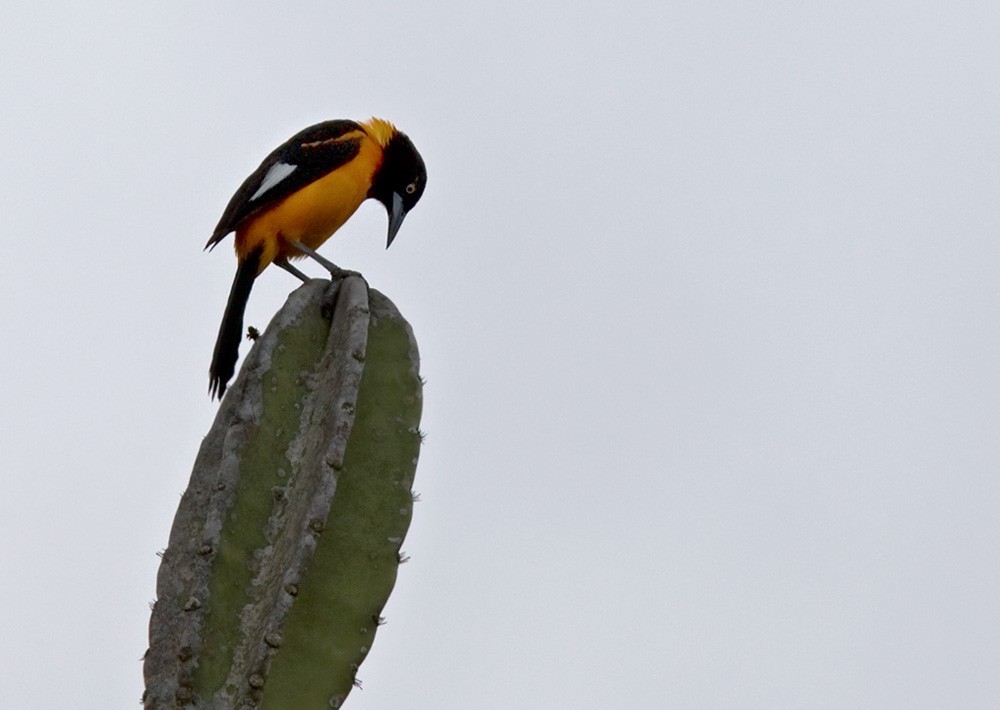Campo Troupial
A species of New world orioles Scientific name : Icterus jamacaii Genus : New world orioles
Campo Troupial, A species of New world orioles
Botanical name: Icterus jamacaii
Genus: New world orioles
Content
Description General Info
 Photo By Lars Petersson
Photo By Lars Petersson Description
The campo troupial is very similar in appearance to the Venezuelan troupial (Icterus icterus) with which it was at one time thought to be conspecific. It is a robust bird about 23 cm (9 in) long with a long tail and a broad beak. It is bright orange apart from a black hood and bib, back, wings and tail. There is an uneven line dividing the bib from the breast. It differs from the Venezuelan troupial in having only a small patch of white on its wings and hardly any bluish skin around its eye, and it has orange epaulettes on its shoulders whereas the Venezuelan bird does not. It could also be confused with the orange-backed troupial (Icterus croconotus), with which it was also once considered conspecific, but that species has an orange head apart from a patch of black on its forehead, a sharp dividing line between its bib and its breast, and rather more orange on its back. 
Size
26 cm
Nest Placement
Tree
Feeding Habits
Campo Troupial feeds on a varied diet including arthropods (such as fly larvae, beetles, bugs), potentially small vertebrates, as well as fruits of cacti, papayas, mangos, and annonas. Campo Troupial also consumes nectar from Erythrina and Cereus flowers, often foraging arboreally and upside-down, alone or in groups.
Habitat
The campo Troupial typically resides in areas where clearings and edges of primary and secondary caatinga, a type of dry forest, are prevalent. These birds are also regular visitors to orchards and gardens within small towns, favoring the lowland regions of broader geographical areas characterized by such environments.
Dite type
Omnivorous
General Info
Feeding Habits
Bird food type
Distribution Area
The campo troupial is endemic to northeastern Brazil, where its area of occurrence is estimated to be over 2,000,000 square kilometres (770,000 sq mi). It typically inhabits dry scrubland and deciduous woodland, at elevations up to 700 m (2,300 ft) or more. The ranges of the Venezuelan troupial, the campo troupial and the orange-backed troupial do not overlap. 
Species Status
The campo troupial is a fairly common bird with a wide range and the population seems to be stable. For these reasons, the International Union for Conservation of Nature has rated its conservation status as being of "least concern". 

 Photo By Lars Petersson
Photo By Lars Petersson